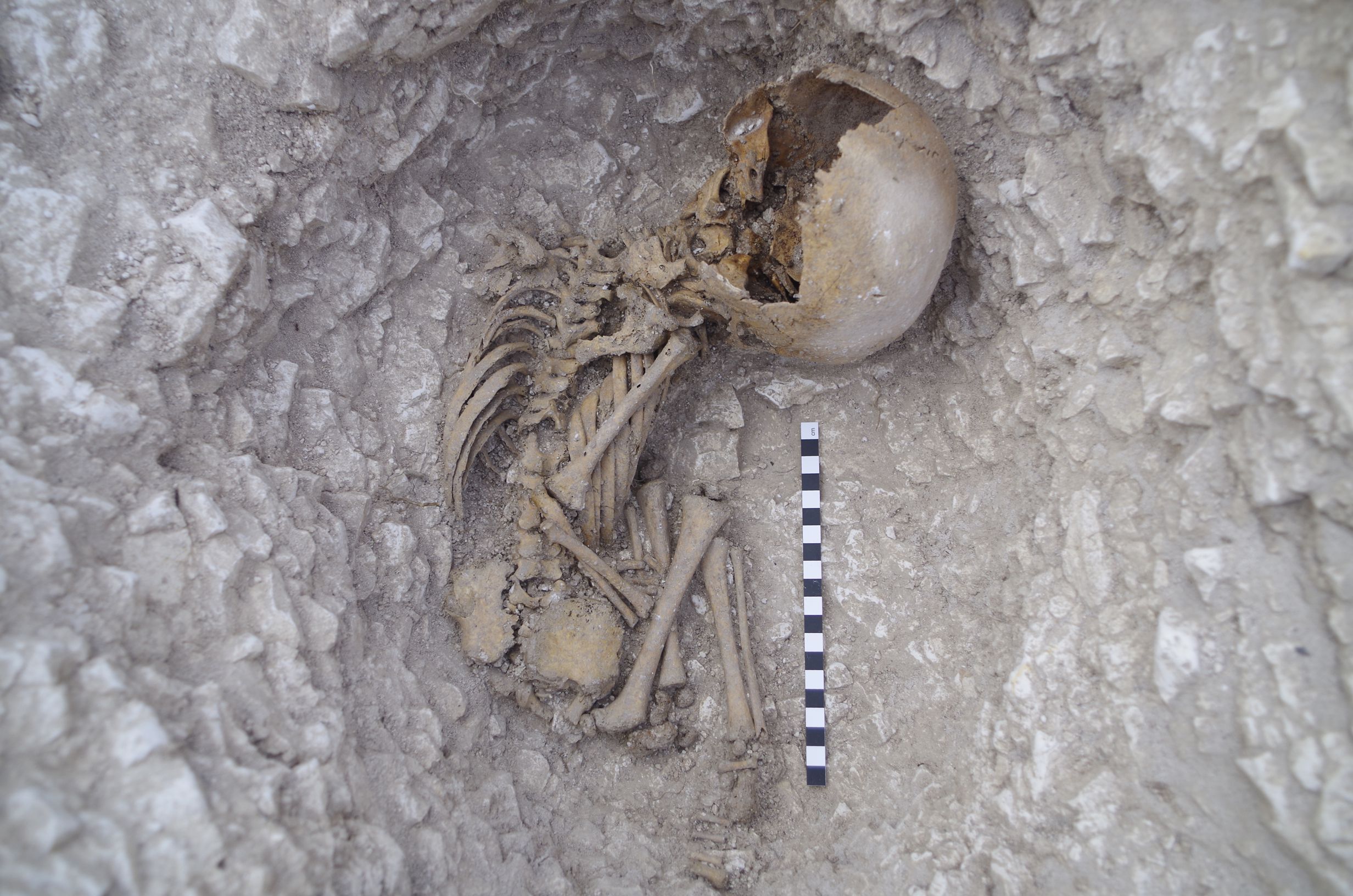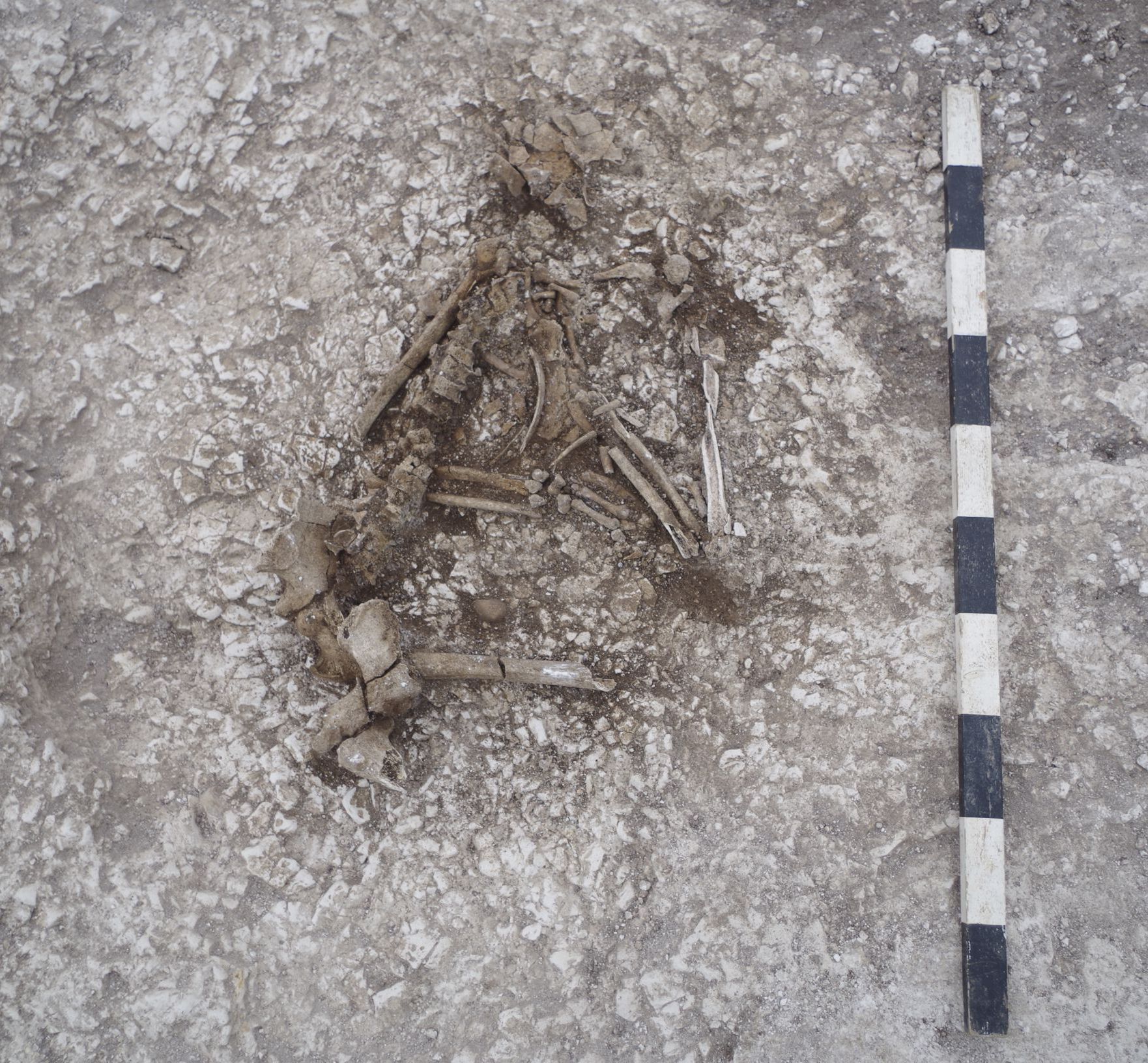Wessex Archaeology was commissioned by Aspire Defence Capital Works (ADCW) on behalf of the Ministry of Defence to undertake an archaeological evaluation within part of Larkhill Camp, Wiltshire. The evaluation forms part of the wider, ongoing archaeological investigations which are being undertaken in support of the regional Army Basing Programme (ABP).
The archaeological evaluation comprised of excavations within an area proposed for redevelopment to build a new sport pitch. The excavations revealed archaeological features cut into the natural chalk geology, ranging in date from the prehistoric period through to the Second World War. The archaeological remains also included three prehistoric inhumation burials.

Osteological assessment has revealed that the remains from the three graves comprised those of an infant, of about 3 years of age, a teenage male of around 15−17 years and an adult female aged between 35 and 50 years.
The infant burial had been made in a grave cut through the lower fill of an existing ditch. Over time, the latter gradually silted up sealing the grave. Prehistoric pottery was found in the ditch fill which suggests the burial is also prehistoric.
The teenage male was of a robust build and his remains show no obvious signs of pathology. He was buried in a prone position – that is face down – but his legs were bent up behind him with his feet resting up against the side of the grave some way above the level of his head. There are indications that his grave was relatively shallow, and the unusual position of his legs would have resulted in his feet lying close to the surface; most of his foot bones are missing and there is evidence suggestive of canid gnawing to some of the surviving foot bones. Wessex Archaeology has produced an interactive 3D model of the burial and a video based upon photogrammetry undertaken of the burial remains.
If you are unable to view the 3d model please follow this link.

The adult female was laid in a flexed position and we know such a posture is typical of – though not exclusive to – burials made between 2400 to 1600 BC. Osteological assessment has revealed that this individual would have suffered from back pain and stiffness indicated by to pathological changes evident in her spine.
Other finds within the location of the proposed sports pitch include prehistoric pits and ditches, worked flint, five military air raid trenches dug in a zig-zag formation and the foundations of three military buildings thought to date from the Second World War.